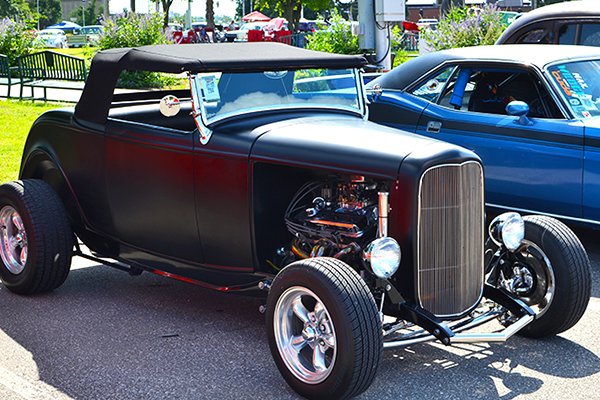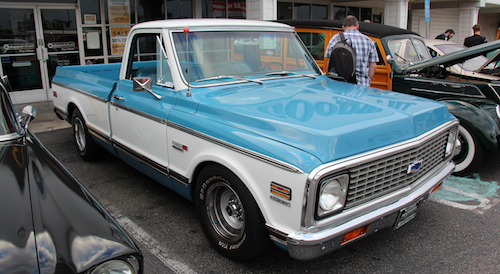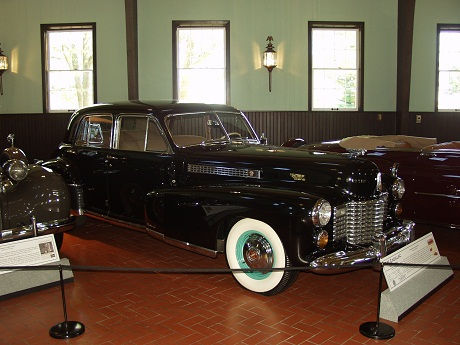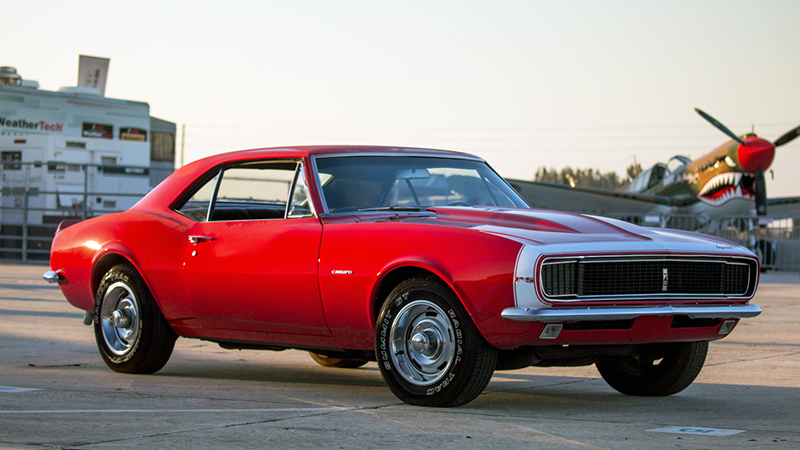
From timeless icons to everyday essentials, Crucial Cars examines the vehicles we can't live without. This installment is Part 2 of our exploration into Dodge's vicious Viper. Here's Part 1.
When the Dodge Viper RT/10 concept was shown at the 1989 Detroit Auto Show, it looked something like the evil reincarnation of the 1960s' Shelby Cobra.
With its curvaceous lines, long hood, close-coupled cockpit and short rear deck, the Viper had the sleek yet somewhat minimalist visual vibe of the old Cobra. And like a 427 Cobra, the Viper show car was powerful—nothing less than eight liters, 10 cylinders, and about 400 horses worth.
Most folks thought that it would never see production. After all, the Viper would have to meet all sorts of safety and emissions regulations that the 1960's car makers didn't have to worry about. But make it they did.

More power and a real top
For 2003, the Viper RT/10 roadster was redesigned and renamed the SRT-10. Along with all-new but evolutionary styling, it now had a real convertible top instead of the automotive toupee of a targa roof it wore previously. The V10 engine was larger and more powerful, up to a full 8.3 liters and 500 horsepower, while a 2.6-inch stretch in the wheelbase added a little more room in the still somewhat-tight cockpit. In keeping with its "serious drivers only" ethos, the new Viper drop top could only be had with a six-speed manual. And no cup-holders.
Performance was expectedly brutal, with the 0-to-60 dash and quarter mile run taking just around 4 seconds and 12 seconds, respectively. The suspension was revised to be less prone to snap oversteer and hence more progressive when the massive rear tires did start to let go, while huge 14-inch Brembo brakes were fitted all around for stronger stopping ability. Outside, the side-exit exhausts returned, while the new styling featured angular fender side cuts in place of the curved ones seen previously. In addition to power-adjustable pedals, the interior had better-quality switchgear along with more soft-touch surfaces and a few metallic accents. Still, it lacked the "wow" factor that the extroverted exterior had in abundance.

Source | Pat Durkin
Coupe comeback
This new-generation Viper was initially lacking a coupe counterpart, but that changed for 2006, when once again a Viper coupe joined its open-air brother. The new Viper coupe (officially called "Viper SRT-10," as with the convertible) packed 10 more horsepower than the convertible and was still a handsome beast with its rakish roofline and ducktail spoiler. But like the roadster, this was not an easy car to live with on a daily basis, given its awkward ingress/egress, super-long hood and tightly-spaced pedals that took some getting used to.

Source | Alden Jewell/Flickr
After taking 2007 off, the Viper returned for 2008. Although it looked little changed apart from larger hood vents, the newest Viper packed a lot more venom. Now up to 8.4-liters, the V10 produced a staggering 600 horsepower. A new six-speed gearbox and limited slip rear end, as well as tweaks to the suspension, further improved performance and handling. You were now talking about a car that could slingshot itself to 60 in 3.6 seconds and burn up the quarter mile in 11.7 seconds.

Source | KarleHorn
Top speeds were just as incredible, with Dodge claiming the roadster's at 197 mph and the coupe's at 202 mph. Still, sales numbers waned for this world class supercar, and just two years later Dodge announced the Viper was going away. Indeed, the 2010 model year brought 50 "Final Edition" Vipers.
I'll be back…and then gone…again
The model years 2011 and 2012 essentially saw the Viper in hibernation. Hibernation? Wasn't the car dead? Not for long—for 2013, the Viper came hissing back in a coupe body style. The Viper's familiar yet all-new styling was more polished than before, resurrecting the first-generation's more harmonious curved-body side cut-outs. Carbon-fiber body panels, along with lighter-weight chassis components, reduced the curb weight by 100 pounds from the 2010 model year.
Notably, stability and traction controls were now standard, and the interior was much nicer, with higher-quality materials and more style. Even comfort went up a few notches with a power driver seat and a navigation system among the many options. A GTS version loaded the car up with those features, as well as unique hood and wheel designs, a dual-mode suspension (with Bilstein dampers), adjustable stability control, and a fancier interior with contrasting stitching and a 12-speaker sound system.

But make no mistake: This beast was not fully tamed by any means, as output from the 8.4-liter V10 grew to a thundering 640 horsepower. With the ability to rip to 60 mph in just 3.2 seconds and unreel the quarter mile in 11.4 seconds, the Viper was every bit the rolling amusement park ride its fans expected. Handling was improved as well, and on a track, the Viper was a potent weapon with which to do battle against Corvette Z06s, Porsche 911s and assorted Ferraris and Lamborghinis.

Source | LotPro Cars/Flickr
Still, the sales-chart love just wasn't there, as enthusiasts shopping this niche market couldn't argue against the greater affordability and higher bang-for-the-buck value provided by other high-performance picks, such as the Corvette Z06, Shelby GT500 Mustang and Nissan GT-R.
After this massive redesign, the Viper hung around for another four years with just detail changes, until it was announced that the 2017 model year would be the final (for real) year of production. All things considered, however, a nearly 25-year production run for such a specialized car is impressive. Even more impressive is the fact that Dodge brought the Viper to production in the first place, yielding a speedy snake that didn't just keep up with the big dogs, but often times slithered right past them.
If you haven't already, read Part 1 of our deep-dive into the Viper.
What do you think of the Viper? Tell us in the comments.









